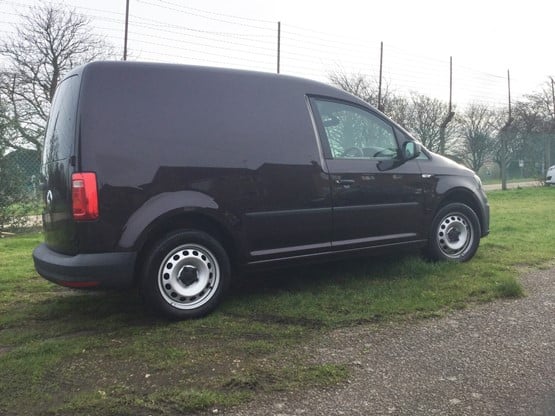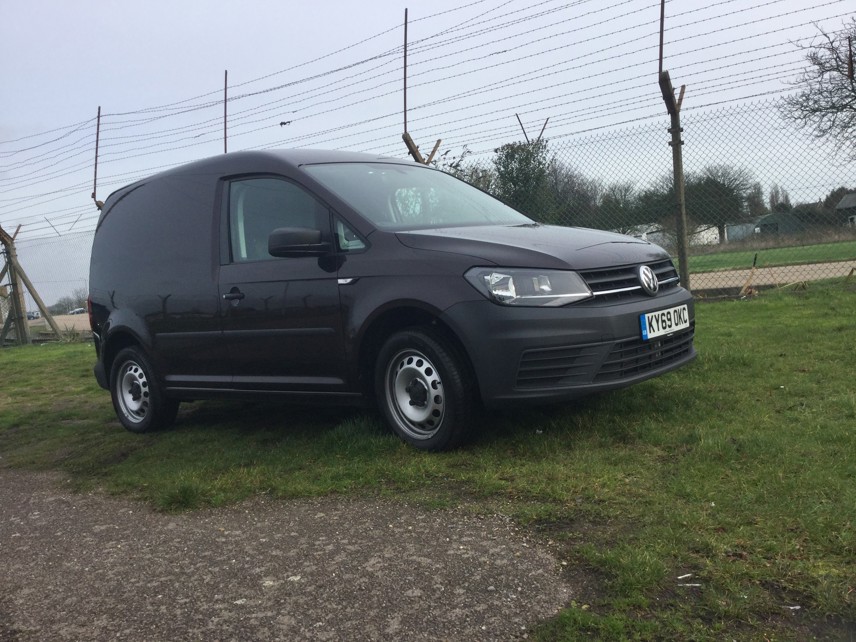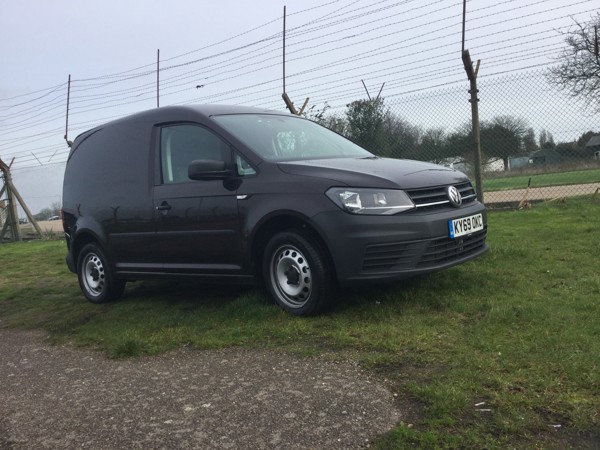Review
I have eulogised about our long-term Caddy’s reliability, its wonderful build quality and its admirable driving manners – but I have yet to talk about the business end, which is why most fleet managers will choose a van.
So let’s take a peek into the back…
The Caddy has asymmetric loads, which means one is wider than the other. It doesn’t signify much if the rear doors are unglazed but, for those with windows, it means the driver’s rear view mirror isn’t obscured by a big metal post. There’s also a side sliding door as is common on vans of this size.
Load volume at 3.2 cu m and payload at 647kg are about par for the course in a small van, but the Caddy also has half-height side panels which should stop any loose cargo damaging the van from the inside out and causing those dreaded reverse dings which are almost impossible to mend cost-effectively.
Also of note is the plastic non-slip floor which stops small items from whizzing about in the back when they aren’t lashed down. It’s also useful for any company that carries loads which are likely to scratch the rear end. At selling time the plastic can be removed to reveal a pristine metal floor, which will add hundreds of pounds to the resale value.
Six load-lashing eyes are provided to keep things in place, although they are all in the floor. I could have done with a couple halfway up the load area on a few occasions.
But the icing on the cake is the dazzlingly bright lighting system in the roof. Most vans have a single pathetic little light that is next to useless when loading up in the dark and it’s just one more example of how Volkswagen has carefully considered exactly what a busy van driver needs when speccing the Caddy.
Shortly, our Caddy will be swapped for the bigger Crafter, which we will be keeping for three months, so it will be interesting to see how the bigger van shapes up against its smaller brother.
Several weeks ago, pre-pandemic, my cousin’s husband, who runs a successful gelato shop in town, told me he was about to expand his business and start doing outside events and weddings – and he wanted my advice about which small van to buy.
I said, without even thinking, “Caddy” and when he asked if I was sure, I replied in the affirmative.
Just two weeks before coronavirus hit, he became the proud owner of such a van and, while his business came to a full stop and he is facing tough times, at least he acknowledges that he has a cracking piece of kit to drive him and his wife around.
It was interesting to compare his van with our loaner because his is the top-of-the-range Highline model weighing in at £21,615 ex-VAT, whereas ours is the bottom spec Startline at £18,440.
Apart from the alloy wheels on the Highline, there doesn’t seem to be a lot of obvious difference between the two. True, he has some bits of kit that I don’t have, but nothing I would really miss.
And, of course, both have that wonderful emergency braking system that automatically slams on the anchors if it detects an imminent crash at less than 30mph.
You can see why most fleet managers opt for the Startline.
Both vans have half-height load protection in the back so, given he will be carrying nothing more than tubs of ice cream around, he doesn’t even need to go for a full ply-lining kit.
And, while he greeted me with a long face the other day, he had to admit: “You were right. This van is amazing. I love it. I prefer driving it to my car.”
And I reminded him, too, that however long he kept it for, he would be assured of lots of eager second buyers when he came to sell it. And you can’t lick that!
They say every cloud has a silver lining and while there may not be many positives to the present coronavirus pandemic, one unforeseen plus is that it means I can keep the long-term Volkswagen Caddy test vehicle for a little longer than intended.
It was due to be swapped for the larger Crafter any time now but, along with most of the country, the VW press vehicle operation has virtually shut up shop and battened down the hatches trying to avoid unnecessary travel.
A quick call to the VW public relations department assured them that as long as the Caddy was with Fleet News, I would continue writing (glowing) reviews because this van ranks as one of the best I’ve ever driven in 30 years as an LCV motoring journalist – and that is saying something as it’s currently on runout ready for a brand new model early in 2021.
Of course, I am not covering many miles at present – just trips to the local supermarket to stock up on necessities such as wine, but every time I climb aboard, a grin spreads across my face as I revel in the sheer quality that this van exudes from every pore.

It’s a delightful vehicle to drive too, especially with that DSG auto gearbox which saves me messing around with a clutch and gear lever.
I will be interested to see how much better the new Caddy is when it finally arrives as I really can’t see how this present model could possibly be improved.
The only way it is bettered by newer rivals is in the official fuel economy stakes – the Caddy now lags some way behind, say, the Citroën Berlingo, Peugeot Partner and Vauxhall Combo trio.
But, what it lacks in fuel economy is more than made up for in build quality and safety features. For example, the anti-crash system which will automatically slam on the anchors and prevent an accident at under 30mph if one is detected as imminent.
It’s standard across all VW vans now and the prevention of an accident will more than make up for any potential extra cost at the pumps.
We are already halfway through our three-month test stint with the Caddy and I’m loving every minute.
The Caddy is due to be replaced early next year. But, if I was a fleet driver I’d be more than happy with what’s on offer in the current model – and that’s saying something as vans on run-out are usually beginning to look and feel their age.
The Startline is the lowest model in the range but, even so, boasts a stunning array of kit as standard – not least of which is the city emergency braking system that stops the van in its tracks at any sign of a prang under 30mph. This is standard on all VW vans now and the manufacturer has to be hugely praised for its safety stance.
I can’t list all the kit on this van as it would fill the whole page. But, suffice to say if your drivers manage to crash a Caddy, then they probably shouldn’t be working for you.
VW also added a few extras for us, too. The blackberry metallic paint job at £528 gives the vehicle a really stylish look while the lumbar adjustment on the driver’s seat (£174) is a must for old groaners like me who suffer from back twinges on long journeys. The super-snazzy entertainment/sat-nav package is stunning but, at £900, it’s unlikely fleet drivers will get it.
I’ve already added nearly 2,000 miles to the Caddy’s clock since its arrival and every mile has been a sheer driving pleasure.
German-made products are revered for their superb quality – and it’s one good reason why Volkswagen has taken its place firmly in the number two slot in the van sales charts.
As a lover of all things German (note my surname), it was with some glee that I received a call from the Volkswagen press office offering the loan of a Caddy for three months, followed by a similar stint in a larger Crafter.
The Caddy is soon to be replaced with a new version – and a right corker it looks, promising that “no screw has been left untouched”. In the meantime, the Volkswagen fleet team is confident that the present contender can still, even nearing the end of its life, stand up to anything from the opposition. And I reckon they are right.

Our test model is the Startline variety – the entry model so the one most fleet managers will choose – with a sensible 103PS diesel powerplant under the bonnet. To my joy, I found it mated to a DSG gearbox which offers seamless changes without messing around with clutches and gear levers.
More and more vans are being offered with auto boxes nowadays and about time too.
I’m looking forward to my time with the Caddy immensely and will be offering up some comments on its ride, handling and fleet suitability in the coming issues of Fleet News.
Specs
| Manufacturer | Volkswagen |
| Model | Caddy Light Commercial |
| Specification | Caddy C20 N1 2.0TDI 102 SS Startline Van DSG A6 20MY |
| Model Year | 0.00 |
| Annual VED (Road tax) | £0 |
| BIK List Price | £19,450 |
| CO2 | 158g/km |
| Insurance Group | N/A |
| CC | N/A |
| Fuel Type | |
| Vehicle Type | Small van |
| Luggage capacity (Seats up) | 2litres |
Running Costs
| P11D | £19,450 |
| Insurance group | N/A |
| Fuel Type | |
| Cost per mile | 43.72ppm |
| Fuel | 12.38ppm |
| Depreciation | 28.18ppm |
| Service maintenance and repair | 3.16ppm |
Rivals
Info at a glance
-
P11D Price
£19,450
-
MPG
47.1 -
CO2 Emissions
158g/km -
Payload
670kg -
Load Volume
3,200mm -
Load Width
1,556mm -
Load Length
1,779mm





 Diesel
Diesel
 Petrol
Petrol












